In Celebration of the iPhone’s 10th Anniversary, Let’s Take a Look Back at Every iPhone Ever Made

Toggle Dark Mode
The iPhone has come a long way since its inception in June 2007. Let’s take a quick look at the iPhone’s journey from modest mobile handset to the most coveted, feature-rich handheld device.
iPhone
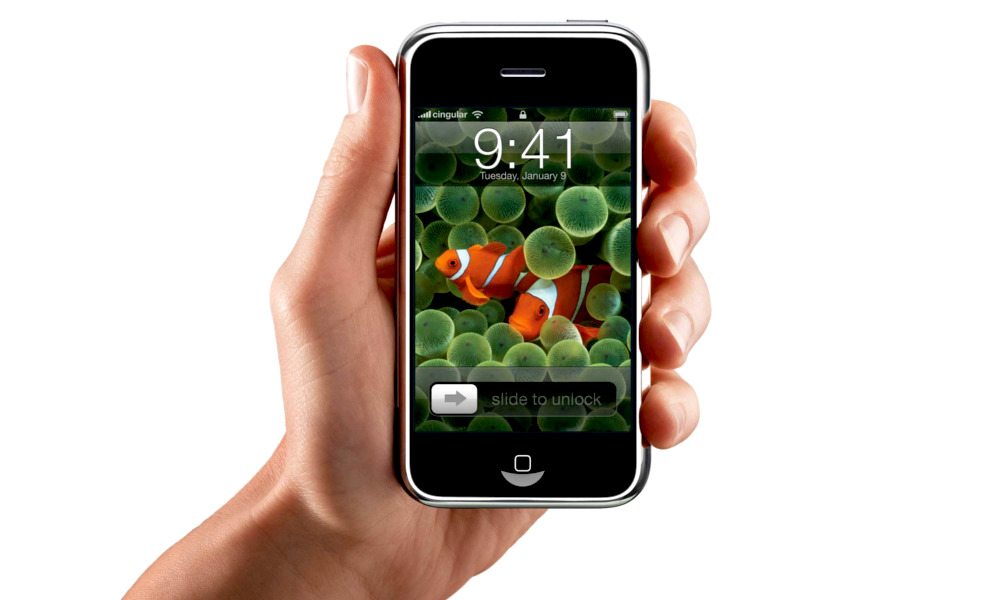
The iPhone was announced by Apple’s then-CEO Steve Jobs at the Macworld Convention on January 9th, 2007 – and the first iPhone officially launched on June 29th, 2007. The development of the device began in 2004, originally nested under the name “Project Experience Purple” after Jobs asked his employees to investigate and toy with the use of tablet computers and touchscreen devices. When it hit stores, the iPhone was priced at $499 and $599 for the 4GB models and 8GB models, respectively. It touted email capabilities, iPod functionalities, maps, a 2MP camera, and more…all through a capacitive touchscreen, an industry leader at the time.
iPhone 3G

The iPhone 3G was released the following year in July 2008, with new improvements to the original model that enticed users. The 3G model featured a new all-plastic form factor (which helped improve the GSM signal), and also broadened to include a white model in the 16GB version. Accordingly, the 3G model also increased download speeds far beyond the rates EDGE could provide.
iPhone 3GS
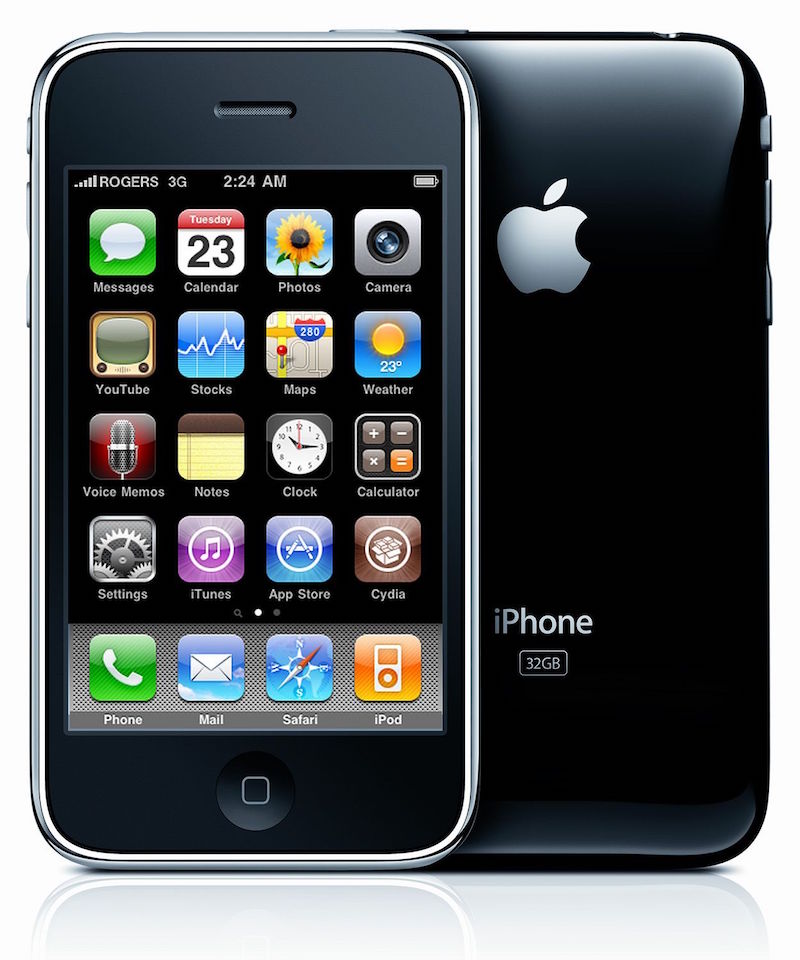 The next iPhone model was the 3GS, which honed in on better battery life, increased data and networking speeds, and improvements on the overheating issues reported by iPhone users. Though similar in design, the device packed a lot of improvements: cellular radio updates, a twice-as-fast chipset, a digital compass, and other additions that helped take the iPhone to the next level. Plus, a 32GB model was introduced with the unveiling of the 3GS.
The next iPhone model was the 3GS, which honed in on better battery life, increased data and networking speeds, and improvements on the overheating issues reported by iPhone users. Though similar in design, the device packed a lot of improvements: cellular radio updates, a twice-as-fast chipset, a digital compass, and other additions that helped take the iPhone to the next level. Plus, a 32GB model was introduced with the unveiling of the 3GS.
iPhone 4
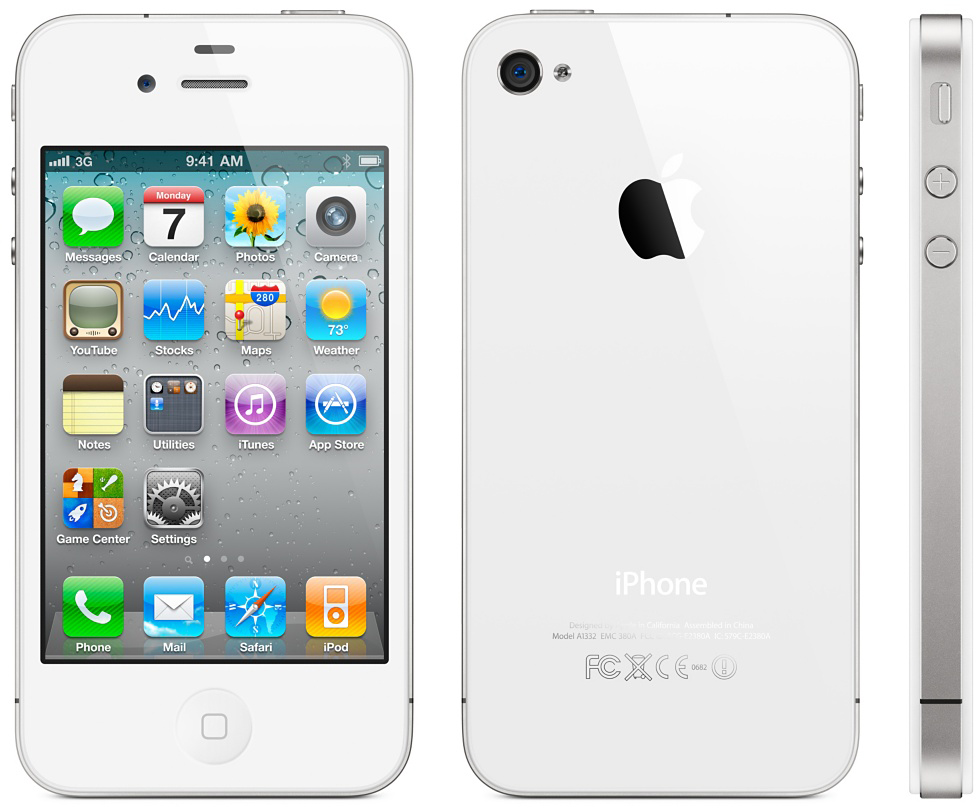
Users were then introduced to the iPhone 4 in June 2010, which drastically changed the device. Instead of merely updating speed issues or the form factor, Jobs decided that the iPhone needed an entirely new look. With the iPhone 4, users were treated to a new Retina Display with better resolution. The device was also 24% thinner than its predecessors, and featured a thin steel band that encompassed the device. It also had increased RAM, a 5MP camera, dual mics, and the first front-facing camera on an iPhone (with VGA resolution and FaceTime video calling).
iPhone 4s

Then the iPhone 4 model got a refresh with the announcement of the iPhone 4s in 2011. However, this was an usual year for iPhone announcements and Apple enthusiasts – the World Wide Developers Conference (WWDC) came and went without a new iPhone model, and Steve Jobs resigned as CEO to have Tim Cook take his place. However, October 2011 saw a special media event called “Let’s Talk iPhone,” and that’s when the latest iPhone 4s model was unveiled. This iPhone model came with a number of improvements including an A5 processor, antenna band improvements, an 8MP rear camera, and more. One of the biggest announcements, though, was the integration of the voice-controlled assistant, Siri.
iPhone 5
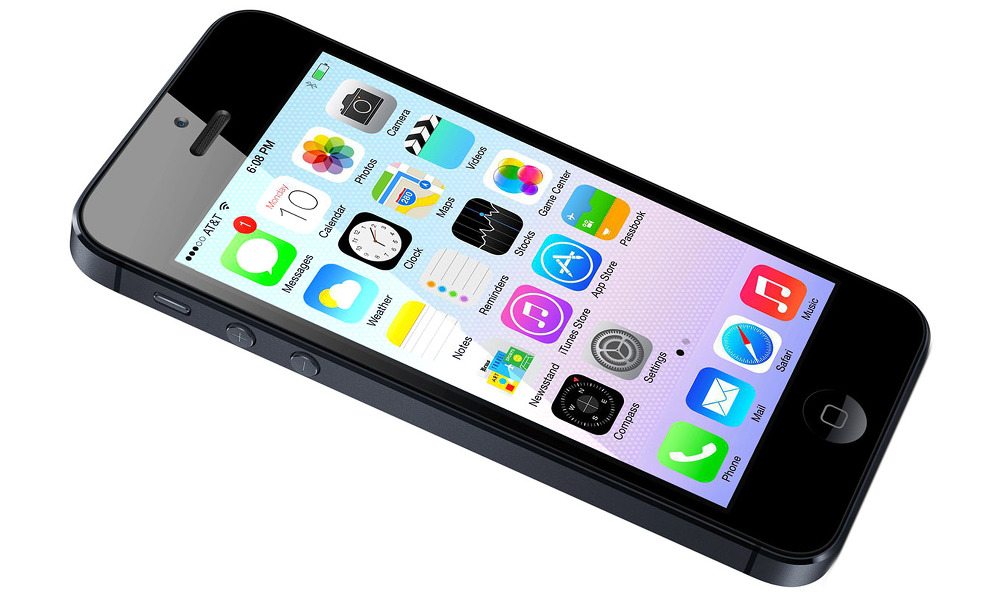
The iPhone 5 followed suit and debuted in September 2012. The major change found on this iPhone model was the display’s aspect ratio, which challenged the classic 3:2 ratio with a 16:9 ratio, which in turn took the display from 3.5” to 4”. Additionally, the iPhone 5 featured Apple’s first custom processor, a smaller SIM card, 4G LTE support, a third microphone, and the new Lightning connector. All of which came in a device that was 12% smaller by volume.
iPhone 5s
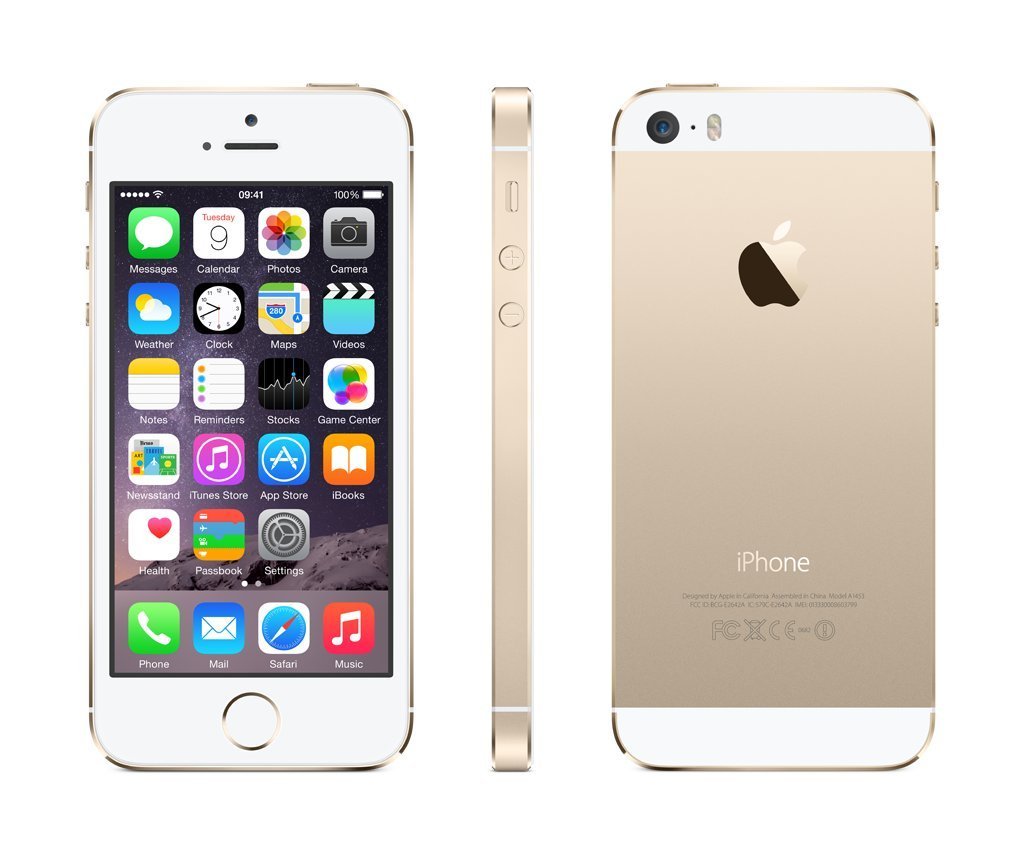 The iPhone 5s was revealed at September’s Apple event in 2013. Though the device came with the same display size and ratio, it also carried with it a number of changes that helped to showcase Apple’s ingenuity. The 5s model kept the same form factor but introduced a new color to the mix: gold. The device also came with an A7 processor, a larger lens aperture, dual-LED flash for the camera, and more. The biggest standout from the launch of this model was the Touch ID fingerprint sensor, which was the newest way to unlock your iPhone and approve App Store or iTunes purchases.
The iPhone 5s was revealed at September’s Apple event in 2013. Though the device came with the same display size and ratio, it also carried with it a number of changes that helped to showcase Apple’s ingenuity. The 5s model kept the same form factor but introduced a new color to the mix: gold. The device also came with an A7 processor, a larger lens aperture, dual-LED flash for the camera, and more. The biggest standout from the launch of this model was the Touch ID fingerprint sensor, which was the newest way to unlock your iPhone and approve App Store or iTunes purchases.
iPhone 5c
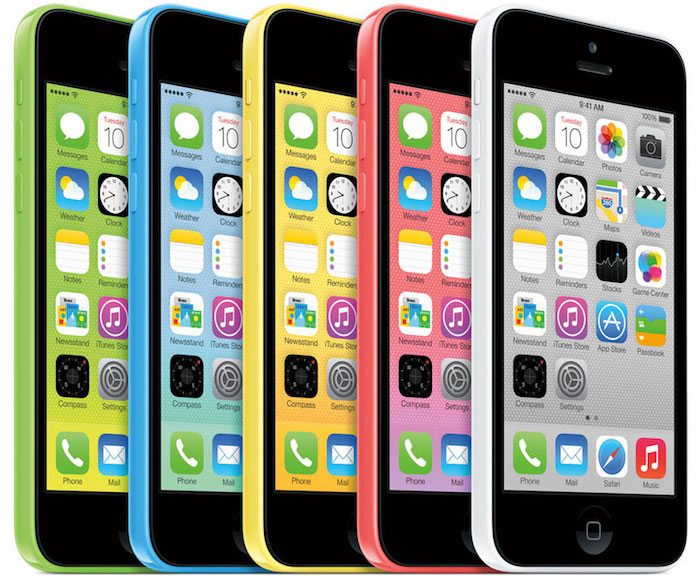
To make their devices more affordable, Apple also introduced the iPhone 5c in 2013. The iPhone 5c model came in a variety of fun colors: green, blue, yellow, pink, and white. Otherwise, the internals of the 5c model were almost identical to the previous year’s iPhone 5. However, the device’s battery life increased, and the FaceTime camera received more pixels. Apple omitted the 64GB version with the 5c, but significantly lowered the price of the 16GB and 32GB versions.
iPhone 6 and 6 Plus
 Then, Apple fanatics were treated to the new iPhone 6 and 6 Plus in September 2014, and this time Apple decided to follow the trend of bigger handsets and showcase 4.7-inch and 5.5-inch models. These devices came with Retina HD display, a relocated power button, A8 processor, improved LTE and Wi-Fi connectivity, and more. The standout announcement from Apple with the 6 and 6 Plus devices was Apple Pay, the new way to authorize payments with NFC technology and Touch ID input. Unfortunately, the iPhone 6 ran into some issues due to a manufacturing malfunction that caused select iPhone 6 and 6 Plus models to bend (thus kick starting “bendgate”).
Then, Apple fanatics were treated to the new iPhone 6 and 6 Plus in September 2014, and this time Apple decided to follow the trend of bigger handsets and showcase 4.7-inch and 5.5-inch models. These devices came with Retina HD display, a relocated power button, A8 processor, improved LTE and Wi-Fi connectivity, and more. The standout announcement from Apple with the 6 and 6 Plus devices was Apple Pay, the new way to authorize payments with NFC technology and Touch ID input. Unfortunately, the iPhone 6 ran into some issues due to a manufacturing malfunction that caused select iPhone 6 and 6 Plus models to bend (thus kick starting “bendgate”).
iPhone 6s and 6s Plus
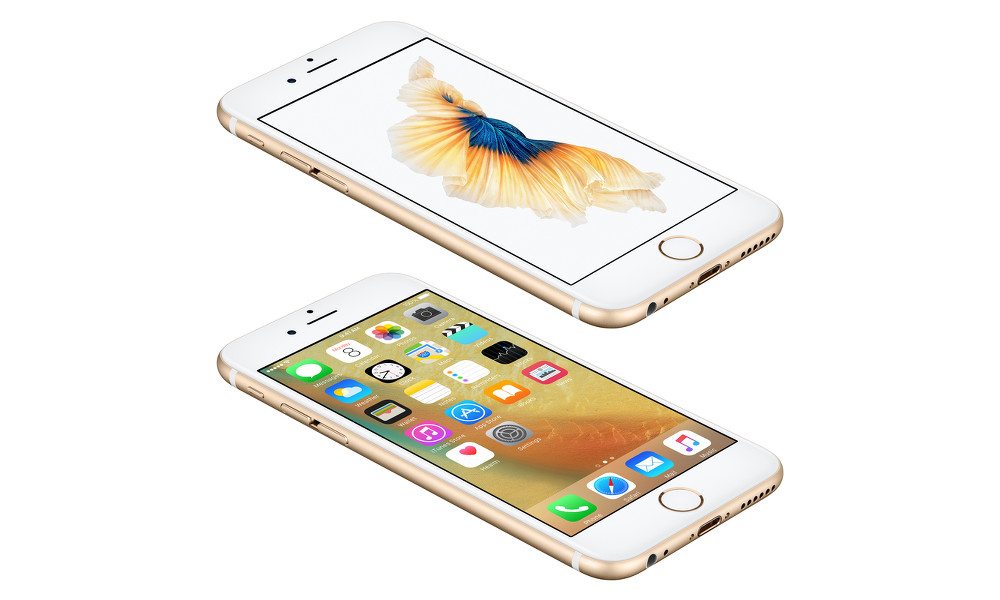
In September 2015 the iPhone 6s and 6s Plus models were announced, which kept the same display dimensions but fixed the rumored “bendgate” issues of the 6 and 6 Plus by choosing an aluminum alloy that strengthened the chassis to increase the device’s durability. The device also had an A9 processor, smaller battery capacity (though this did not affect battery life), an improved Touch ID fingerprint scanner, 12MP rear camera and a 5MP front facing camera. The handset was also the first to debut 3D Touch, the pressure-sensitive touch functionality that gives new life to apps and tools, and Live Photos, which create a short moving image.
iPhone SE
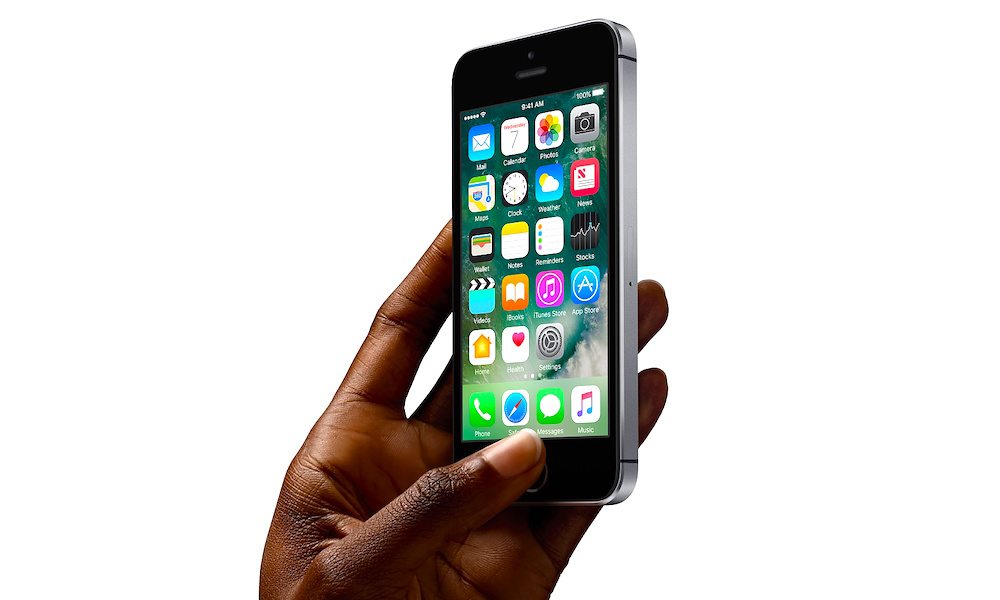
2016 saw the debut of the iPhone SE in March, a device that was reminiscent of the earlier iPhone models due to its small display size, but still showcased the latest Apple had to offer. The device featured a 4” Retina Display, A9 processor, 12MP camera, Live Photos, 4K video, Touch ID, and more. And it even featured CPU capabilities that reached twiced the reported speeds of Apple’s iPhone 5s.
iPhone 7 and 7 Plus
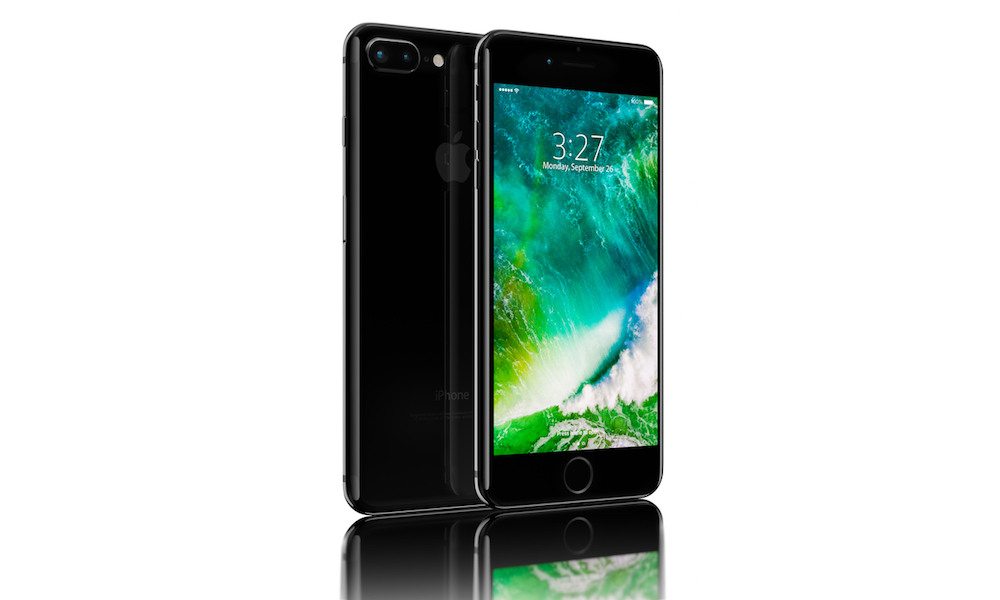
And finally, the iPhone 7 and 7 Plus models. Splash and water resistant, improved Retina Display, 3D Touch features, Touch ID, Apple Pay, 12MP camera and quad-LED flash, this past year’s iPhone model is something to behold. Apple also brought two big improvements: omitting the headphone jack in favor of Bluetooth headphones, and a new stereo speaker system that is twice as loud as the iPhone 6s. Additionally, the larger of the two models comes with a dual-lens camera system that features Portrait Mode for taking stunning photos of friends and family featuring the bokeh effect.
So what’s next for the iPhone? You’ll just have to wait and see what happens in the fall of 2017.






